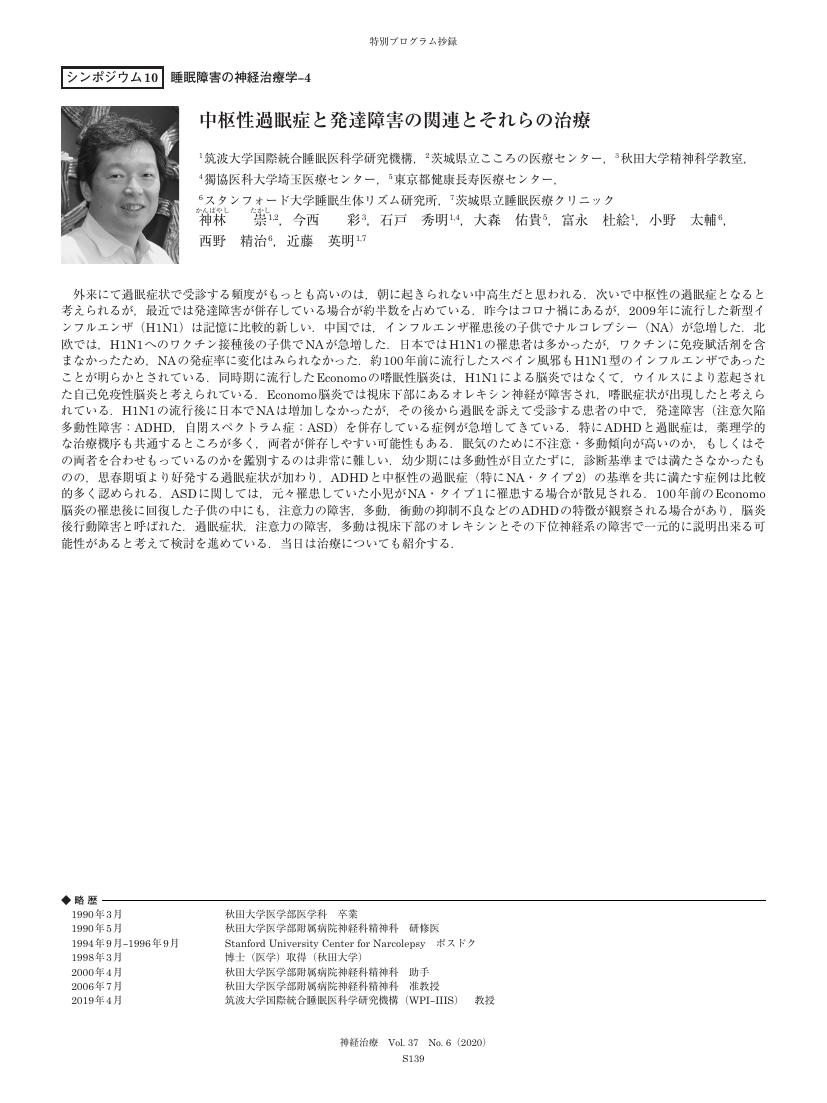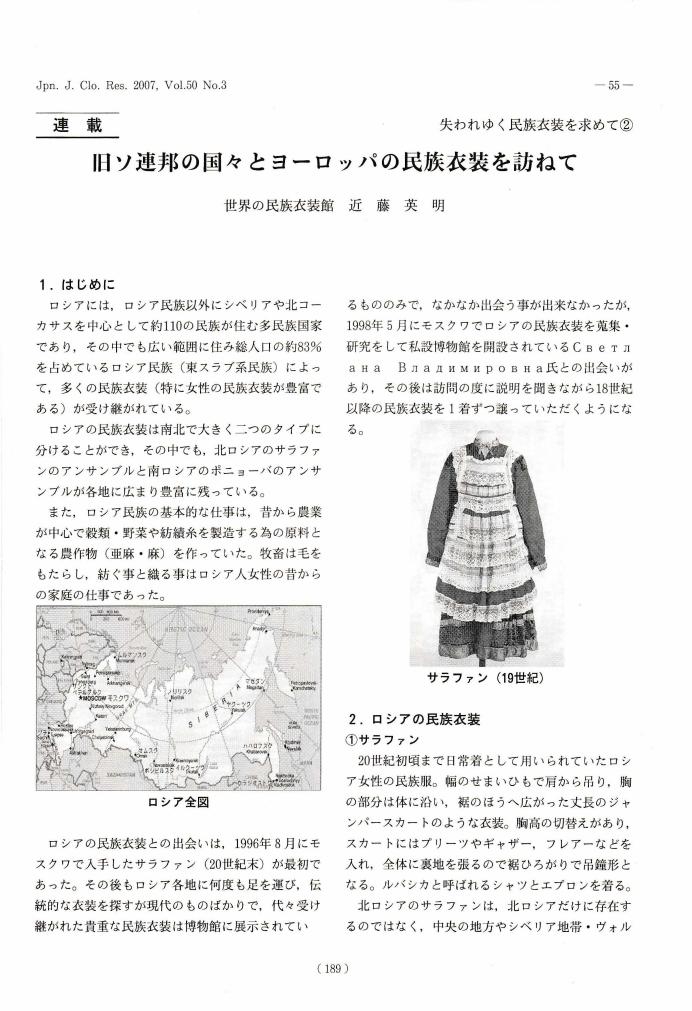- 著者
- 神林 崇 今西 彩 富永 杜絵 石戸 秀明 入鹿山 容子 韓 庫銀 木村 昌由美 近藤 英明
- 出版者
- 日本神経治療学会
- 雑誌
- 神経治療学 (ISSN:09168443)
- 巻号頁・発行日
- vol.38, no.4, pp.503-507, 2021 (Released:2022-04-28)
- 参考文献数
- 7
Even though we are currently in the midst of pandemic from coronavirus infection, the new influenza (H1N1) epidemic in 2009–2010 was unforgettable. Concurrently with the H1N1, narcolepsy surged in post–affected children in China. In Northern Europe, narcolepsy surged in children after H1N1 vaccination. Although there were many cases of H1N1 in Japan, there was no change in the incidence of narcolepsy because anti–influenza drugs prevented the disease from becoming more severe and the vaccine did not contain an adjuvant. It has recently become clear that the Spanish flu that prevailed about 100 years ago was also H1N1. Economo's encephalitis lethargica, which was prevalent at the same time, is thought to be autoimmune encephalitis rather than H1N1–induced influenza encephalitis. It has been reported that Economo's encephalitis caused damage to the hypothalamus, including the orexin system, resulting in lethargic symptoms.Since the 2010s, the number of patients with neurodevelopmental disorders (ADHD, ASD) has been increasing among the patients who complain of hypersomnolence. Consideration of the course of symptoms revealed that the patient was originally below the threshold of the diagnostic criteria for neurodevelopmental disease, that hypersomnolence occurred from around adolescence, and that the case also met the criteria for neurodevelopmental disease. Although hypersomnolence was not noticeable in early childhood and inattention was the main symptom, the diagnostic criteria were not met. Hypersomnolence, on the other hand, increased from around adolescence, was added, and attention deficit was exacerbated. Therefore, it is considered that there are many cases that satisfy both the diagnosis of ADHD and central hypersomnia. ADHD characteristics such as attention deficit, hyperactivity, and poor impulsivity may be observed in children who have recovered from Economo's encephalitis and are called post–encephalitis behavioral disorders. The pathophysiology of Economo's encephalitis is presumed to be a disorder of the hypothalamus, including the orexin system, but it is possible that the disorder remained even after recovery.We believe that impaired attention, and restlessness caused by the hypersomnolence in neurodevelopmental disorders can be explained by dysfunctions of the orexin system and its arousal system. H1N1 morbidity may trigger neurodevelopmental disorders accompanied by hypersomnolence.
2 0 0 0 OA 中枢性過眠症と発達障害の関連とそれらの治療
1 0 0 0 OA 旧ソ連邦の国々とヨーロッパの民族衣装を訪ねて
- 著者
- 近藤 英明
- 出版者
- 日本衣服学会
- 雑誌
- 日本衣服学会誌 (ISSN:09105778)
- 巻号頁・発行日
- vol.50, no.3, pp.189-198, 2007 (Released:2021-02-27)
- 参考文献数
- 7
1 0 0 0 OA オレキシン神経系とナルコレプシー
- 著者
- 近藤 英明 神林 崇 清水 徹男
- 出版者
- 一般社団法人 日本内科学会
- 雑誌
- 日本内科学会雑誌 (ISSN:00215384)
- 巻号頁・発行日
- vol.95, no.4, pp.748-755, 2006-04-10 (Released:2009-03-27)
- 参考文献数
- 31
- 被引用文献数
- 1 1
覚醒機構と摂食行動とは密接に関わっている. オレキシンは両者に関わる神経ペプチドである. 1998年桜井らにより発見され食欲を増進させることよりorexinと命名された. ほぼ同時期にde Leceaらは視床下部に特異的に産生されるペプチドとして同じペプチドを発見しhypocretinと命名した. 2000年にはオレキシン神経系の脱落がヒトのナルコレプシーで確認され, ナルコレプシーに特徴的なREM関連症状とオレキシン神経系との関わりについて明らかにされてきた. その後ナルコレプシー以外の神経疾患でも視床下部の障害によりナルコレプシー類似の症状をきたす症例が報告されるようになった. オレキシンがエネルギーバランス, ストレスと関連することより内分泌代謝, ストレス関連領域でもオレキシンに注目した研究がすすめられてきている. 本稿ではオレキシン神経系の生理的な役割とナルコレプシーの病態への関わりについて概説する.

